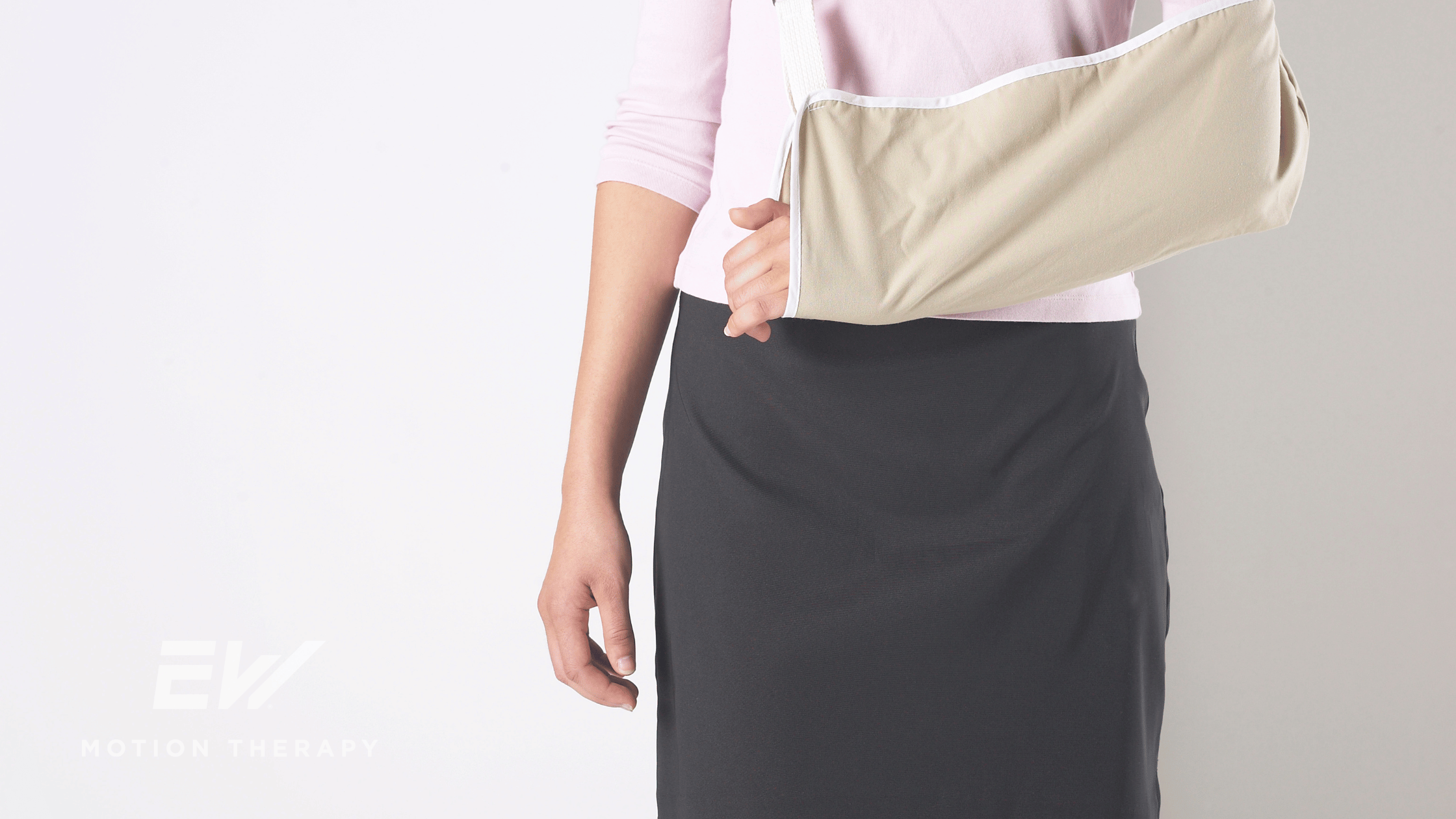Reverse Total Shoulder Replacements: Recovery and Physical Therapy

Licensed Physical Therapist, PT , DPT // Clinical Director of EW Motion Therapy Tuscaloosa
Reverse total shoulder replacement is a surgical procedure designed to relieve pain and restore function in the shoulder joint. This innovative surgery has become increasingly popular for patients with specific shoulder conditions that traditional shoulder replacements may not adequately address. Physical therapy is a crucial part of preparing for the procedure and recovering afterward - our team at EW Motion Therapy works with surgical patients daily to restore function and range of motion. Even if you decide that our physical therapy isn’t right for you, you can still read this article as we explore what reverse total shoulder replacement entails, who can benefit the most from it, the average recovery timeline, and the crucial role physical therapy plays before and after the surgery.
What is a reverse total shoulder replacement?
A reverse total shoulder replacement, also known as reverse shoulder arthroplasty, is a type of shoulder surgery where the typical ball-and-socket structure of the shoulder is reversed. In a healthy shoulder, the ball (humeral head) of the upper arm bone fits into the socket (glenoid) of the shoulder blade. In a reverse total shoulder replacement, the ball and socket are switched: the ball component is attached to the shoulder blade, and the socket is connected to the upper arm bone. This reversal alters the mechanics of the shoulder, allowing the deltoid muscle to lift the arm instead of the rotator cuff.

Who benefits the most from a reverse total shoulder replacement?
A reverse total shoulder replacement is particularly beneficial for patients with the following conditions:
Severe rotator cuff tears
Patients with irreparable rotator cuff tears often experience severe pain and loss of shoulder function. Traditional shoulder replacements may not be adequate because they rely on the rotator cuff to function correctly. Reverse shoulder arthroplasty allows the deltoid muscle to compensate for the deficient rotator cuff, providing pain relief and improved function.
Complex shoulder arthritis
For individuals with advanced shoulder arthritis, particularly when accompanied by rotator cuff tears (cuff tear arthropathy), reverse total shoulder replacement can be a viable solution. This procedure can alleviate pain and restore a greater range of motion than conventional shoulder replacements.
Failed previous shoulder surgery
Patients with unsuccessful shoulder surgeries, including traditional shoulder replacements or other procedures, may benefit from reverse total shoulder replacement. This surgery can address persistent pain and dysfunction that previous surgeries failed to resolve.
Fractures
Severe fractures of the shoulder, particularly in older adults with osteoporosis, can lead to complex injuries that are difficult to repair using traditional methods. Reverse total shoulder replacement can provide a more stable and functional solution.
Average recovery timeline
Recovery from reverse total shoulder replacement surgery is a gradual process that varies depending on the individual's overall health, the extent of the surgery, and adherence to post-operative rehabilitation protocols. Here is a general timeline:
Immediate post-surgery (0-2 weeks)
In the first few days after surgery, patients typically stay in the hospital for observation and pain management. The arm is immobilized in a sling to protect the shoulder. Pain and swelling are managed with medications and ice therapy.
Early recovery (2-6 weeks)
During this phase, patients begin gentle self-guided exercises to restore passive range of motion at their doctor’s instruction. The focus is reducing pain and swelling, preventing stiffness, and protecting the surgical repair. Most patients can perform basic self-care activities with the non-operated arm.
Intermediate recovery (6-12 weeks)
With their surgeon’s approval, most patients begin physical therapy six weeks after surgery. In the early stages, physical therapy includes active range of motion exercises. The goal is to restore shoulder mobility and prevent buildup of scar tissue. Patients may start using the operated arm for more daily activities, but heavy lifting and strenuous activities are still restricted.
Advanced recovery (3-6 months)
Strengthening exercises are introduced at this stage, focusing on restoring full shoulder function. Patients can gradually return to normal activities, including light recreational activities. By the end of this period, most individuals experience significant pain relief and improved shoulder function.
Full recovery (6-12 months)
Complete recovery can take up to a year. Patients continue with physical therapy during this phase to achieve maximum strength and function. Depending on their pre-surgery fitness level and recovery progress, most patients can resume all normal activities, including sports and heavy lifting.
The role of physical therapy before and after surgery
Physical therapy is a critical component of the treatment plan for patients undergoing reverse total shoulder replacement. It plays a vital role both before and after surgery to optimize outcomes.
Pre-surgical physical therapy
Before surgery, physical therapy focuses on preparing the shoulder for the upcoming procedure. Pre-surgical physical therapy can help:
- Improve range of motion: Gentle exercises can help maintain or improve shoulder mobility, which can aid in post-surgical recovery.
- Strengthen surrounding muscles: Strengthening the muscles around the shoulder, such as the deltoid and scapular stabilizers, can provide better support during recovery.
- Educate patients: Physical therapists educate patients on post-operative care, including the proper use of slings, pain management techniques, and what to expect during recovery.
Post-surgical physical therapy
After surgery, physical therapy is essential for a successful recovery. The goals of post-surgical physical therapy include:
- Pain management: Ice therapy, electrical stimulation, and gentle exercises help manage pain and reduce swelling.
- Restoring range of motion: Passive and active range of motion exercises are introduced gradually to restore shoulder mobility without compromising the surgical repair.
- Strengthening exercises: Once healing progresses, strengthening exercises are added to rebuild muscle strength and improve shoulder stability.
- Functional training: Physical therapists help patients regain the ability to perform daily self-care tasks, play sports, and engage in other activities they enjoy.
Reverse total shoulder replacement is a transformative procedure for individuals suffering from severe shoulder pain and dysfunction due to conditions like rotator cuff tears, complex arthritis, failed previous surgeries, or severe fractures. Understanding the procedure, recognizing who can benefit the most, and being aware of the recovery timeline can help patients make informed decisions about their treatment options. Physical therapy before and after surgery is crucial in optimizing outcomes and ensuring a successful recovery. By working closely with a skilled healthcare team, patients can achieve significant pain relief and improved shoulder function, allowing them to return to their favorite activities and enjoy a better quality of life. This is our ultimate goal for all of our physical therapy patients at EW Motion Therapy - to learn how much your physical therapy might cost, click the button below to download our free pricing guide.


